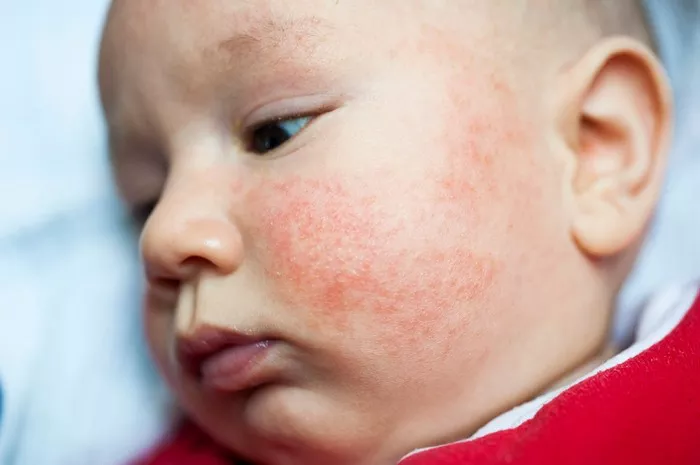Understanding Shingles: A Brief Overview
Before delving into the specifics of creams prescribed for shingles, it’s essential to grasp the nature of the condition itself. Shingles, also known as herpes zoster, emerges as a result of the reactivation of the varicella-zoster virus, which initially causes chickenpox. Following the primary infection, the virus remains dormant in nerve tissues. However, factors such as aging, stress, or a weakened immune system can trigger its reactivation, leading to the development of shingles.
The hallmark symptom of shingles is a painful rash that typically appears as a band or strip of blisters on one side of the body. This rash is often accompanied by itching, burning sensations, and heightened sensitivity to touch. In addition to the discomfort caused by the rash itself, individuals with shingles may experience fever, headache, and fatigue.
Given the significant impact shingles can have on an individual’s quality of life, prompt and effective treatment is paramount to manage symptoms and prevent complications.
The Role of Topical Creams in Shingles Management
Topical creams represent a vital component of the multimodal approach to managing shingles. By delivering medication directly to the affected area, these creams offer targeted relief from pain, itching, and inflammation associated with the rash. Moreover, they can facilitate the healing process by promoting skin repair and minimizing the risk of secondary infections.
Several types of topical creams are commonly prescribed for shingles, each exerting its unique therapeutic effects. Let’s explore some of the most frequently utilized options:
1. Antiviral Creams:
Antiviral creams, such as acyclovir and penciclovir, are designed to inhibit the replication of the varicella-zoster virus, thereby reducing the duration and severity of shingles outbreaks. These medications work by interfering with viral DNA synthesis, ultimately suppressing viral activity and accelerating the healing process.
One of the most widely studied antiviral creams for shingles is acyclovir cream. Clinical trials have demonstrated its efficacy in reducing the duration of shingles-associated pain and promoting lesion healing when applied promptly upon the onset of symptoms. Similarly, penciclovir cream has shown promising results in shortening the duration of shingles episodes and alleviating associated discomfort.
2. Analgesic Creams:
Pain management is a cornerstone of shingles treatment, given the significant discomfort experienced by affected individuals. Analgesic creams containing agents such as lidocaine or capsaicin offer targeted relief by numbing the nerves in the affected area or desensitizing pain receptors.
Lidocaine creams work by blocking nerve signals that transmit pain sensations to the brain, providing temporary relief from shingles-related pain and itching. Capsaicin, derived from chili peppers, functions by depleting substance P, a neurotransmitter involved in transmitting pain signals. While both lidocaine and capsaicin creams can effectively alleviate discomfort, they may cause temporary burning or stinging upon application.
3. Steroidal Creams:
In cases where shingles-associated inflammation is particularly pronounced, steroidal creams may be prescribed to reduce swelling and redness. Corticosteroids, such as hydrocortisone or triamcinolone, possess potent anti-inflammatory properties that help alleviate symptoms of acute inflammation.
However, the use of steroidal creams in shingles management remains somewhat controversial. While they may provide short-term relief from inflammation and itching, there is concern that they could potentially prolong viral shedding and delay wound healing. As such, their use is typically reserved for specific cases under the guidance of a healthcare professional.
4. Emollient Creams:
In addition to addressing the acute symptoms of shingles, it’s essential to support skin health and hydration during the healing process. Emollient creams, formulated with moisturizing agents such as ceramides, glycerin, or petrolatum, help replenish the skin’s natural barrier function and prevent excessive dryness or cracking.
By maintaining skin integrity and moisture balance, emollient creams contribute to overall comfort and facilitate the resolution of shingles-related skin lesions. Regular application of these creams can also minimize the risk of complications such as bacterial superinfection, which can arise from compromised skin barriers.
Considerations for Cream Selection and Application
When choosing a topical cream for shingles management, several factors should be taken into account to ensure optimal efficacy and safety:
1. Timing of Application: Prompt initiation of topical therapy upon the onset of shingles symptoms is crucial to maximize the benefits of treatment. Early intervention can help minimize the severity and duration of the outbreak while providing timely relief from discomfort.
2. Frequency and Duration of Use: Follow the prescribing healthcare professional’s instructions regarding the frequency and duration of cream application. Overuse of certain topical medications, such as corticosteroids, can lead to adverse effects and should be avoided without medical supervision.
3. Patch Testing: Before applying a new topical cream, particularly those containing active ingredients such as lidocaine or capsaicin, performing a patch test on a small area of unaffected skin can help assess for potential allergic reactions or sensitivities.
4. Avoiding Contact with Eyes and Mucous Membranes: Exercise caution to prevent accidental contact of topical creams with sensitive areas such as the eyes, mouth, or genitals, as this can result in irritation or adverse effects.
5. Monitoring for Adverse Reactions: Be vigilant for any signs of allergic reactions, such as rash, itching, or swelling, following the application of topical creams. Discontinue use and seek medical attention if adverse effects occur.
In addition to topical therapy, individuals with shingles may benefit from complementary measures such as oral analgesics, antiviral medications, and supportive care to address systemic symptoms and promote overall recovery.
Conclusion
Shingles can impose significant physical and emotional burdens on affected individuals, necessitating comprehensive treatment strategies to alleviate symptoms and facilitate healing. Topical creams represent valuable therapeutic tools in this endeavor, offering targeted relief from pain, itching, and inflammation associated with the condition.
By understanding the mechanisms of action and considerations associated with various topical creams prescribed for shingles, healthcare providers and patients alike can make informed decisions to optimize treatment outcomes. Through timely intervention, diligent application, and adherence to recommended guidelines, individuals can find relief from the discomfort of shingles and embark on the path to recovery.

























